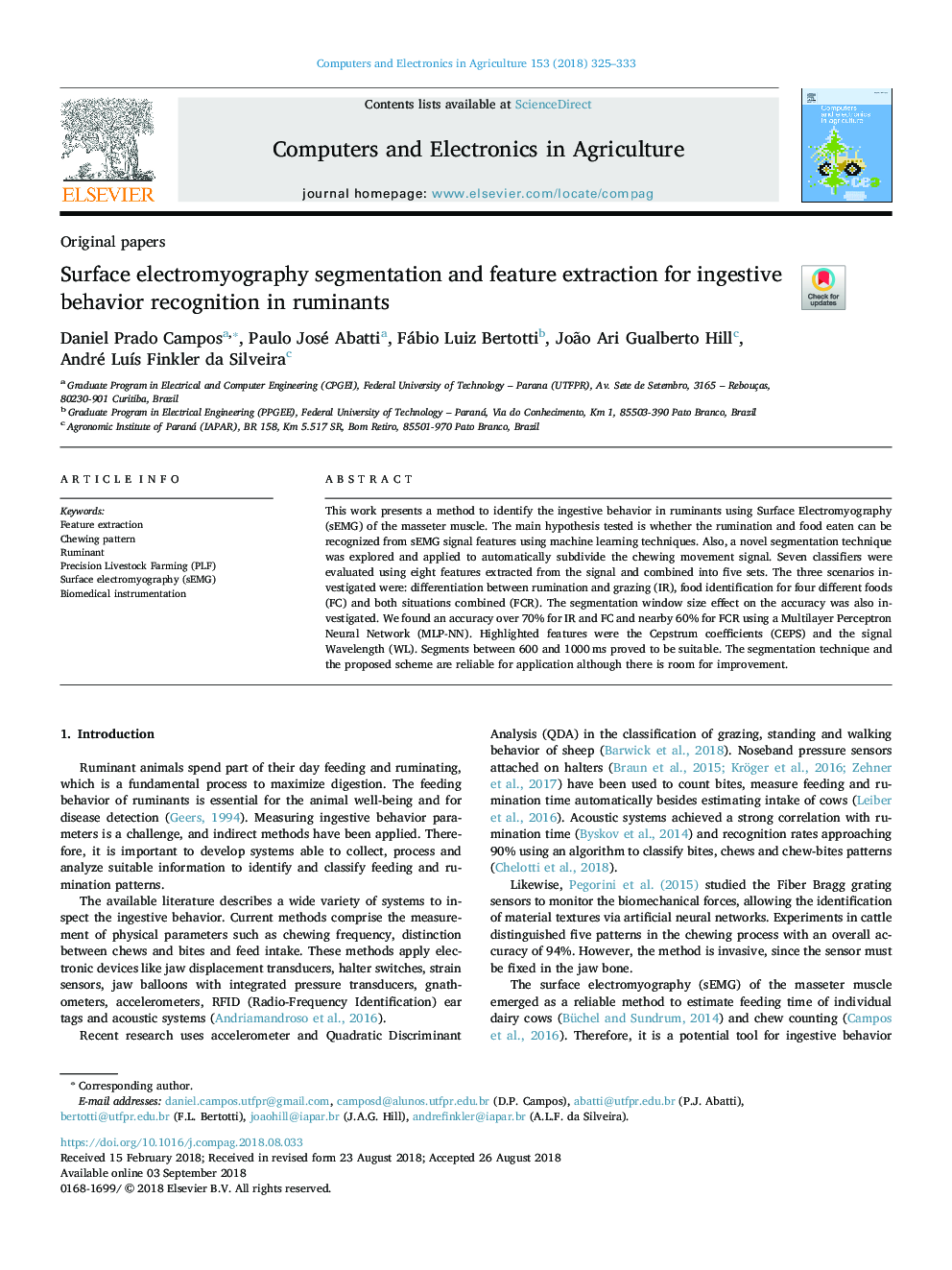| Article ID | Journal | Published Year | Pages | File Type |
|---|---|---|---|---|
| 11000015 | Computers and Electronics in Agriculture | 2018 | 9 Pages |
Abstract
This work presents a method to identify the ingestive behavior in ruminants using Surface Electromyography (sEMG) of the masseter muscle. The main hypothesis tested is whether the rumination and food eaten can be recognized from sEMG signal features using machine learning techniques. Also, a novel segmentation technique was explored and applied to automatically subdivide the chewing movement signal. Seven classifiers were evaluated using eight features extracted from the signal and combined into five sets. The three scenarios investigated were: differentiation between rumination and grazing (IR), food identification for four different foods (FC) and both situations combined (FCR). The segmentation window size effect on the accuracy was also investigated. We found an accuracy over 70% for IR and FC and nearby 60% for FCR using a Multilayer Perceptron Neural Network (MLP-NN). Highlighted features were the Cepstrum coefficients (CEPS) and the signal Wavelength (WL). Segments between 600 and 1000â¯ms proved to be suitable. The segmentation technique and the proposed scheme are reliable for application although there is room for improvement.
Related Topics
Physical Sciences and Engineering
Computer Science
Computer Science Applications
Authors
Daniel Prado Campos, Paulo José Abatti, Fábio Luiz Bertotti, João Ari Gualberto Hill, André LuÃs Finkler da Silveira,
